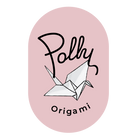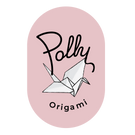Beyond the Fold: Engaging Kids in Ocean Conservation through Origami
Teaching children about ocean conservation doesn't have to be an overwhelming task. By combining creativity, play, and education, parents and educators can inspire the next generation to care deeply for our oceans. One way to achieve this? Origami marine life. Origami not only fosters artistic expression but also provides the perfect gateway to discuss the beauty and challenges faced by marine ecosystems.
Why Origami Marine Life?
The art of folding paper into marine animals like dolphins, turtles, and whales allows children to explore the diversity of life under the sea. It’s tactile, engaging, and makes abstract concepts, like biodiversity and climate change, more relatable. Plus, origami teaches patience, focus, and problem-solving—all while being incredibly fun!
Origami marine life projects are perfect for driving home key lessons about ocean conservation. For example, folding an origami whale can segue into conversations about how plastic pollution affects cetaceans, while making an origami turtle can underscore the dangers of discarded fishing nets.
Getting Started with Origami Projects
Ready to dive in? Start with simple marine-inspired designs that are beginner-friendly. Check out our easy-to-follow guides, like:
Recommended Supplies
To get started, make sure you have the right materials. High-quality, eco-friendly origami papers are great for these projects and can be found in our product list. Using sustainable paper options is another way to reinforce conservation values while crafting.
Making Conservation Lessons Stick
While folding intricately designed marine life, take time to share important conservation messages. Here’s how you can integrate learning into crafting:
- Life Lessons from Marine Animals: For instance, while making a turtle, discuss the threats sea turtles face from habitat destruction and plastic debris.
- Inspire Eco-Friendly Actions: Encourage children to commit to simple conservation practices, such as reducing single-use plastics and participating in beach clean-ups.
- Bridge the Experience with Digital Resources: Share educational videos or books about marine life as follow-up activities.

Example of an origami whale – simple and fun for all ages. Check out our step-by-step guide.
Linking Play with Advocacy
Origami has the power to transform paper folding into a greater cause. Encourage children to expand their advocacy beyond their projects. They can organize a small origami show featuring their marine creations and use the event as an opportunity to share ocean conservation tips with others. It’s art meeting purpose at its best.
Additionally, educators can tie origami into existing curriculum activities, promoting interdisciplinary learning. Geography, science, and even math lessons can integrate conservation alongside origami, creating a richer, more meaningful experience.
More Origami Fun Awaits
If you’re excited about exploring origami beyond marine life, we have a wide variety of projects to dive into. Browse through other tutorials, such as How to Make an Origami Lily or How to Make an Origami Mini Bouquet, to discover even more ways to engage with paper folding.
Join the Movement
Don’t stop at folding! Share your origami marine life creations on social media using the hashtag #FoldForTheOcean. Let’s inspire kids, families, and classrooms around the world to support the cause of ocean conservation.
Call to Action
Are you ready to merge creativity with purpose? Shop our eco-friendly origami supplies and start crafting marine life with your little ones today. Together, let’s inspire a love for the ocean and build a brighter, sustainable future—one fold at a time!










